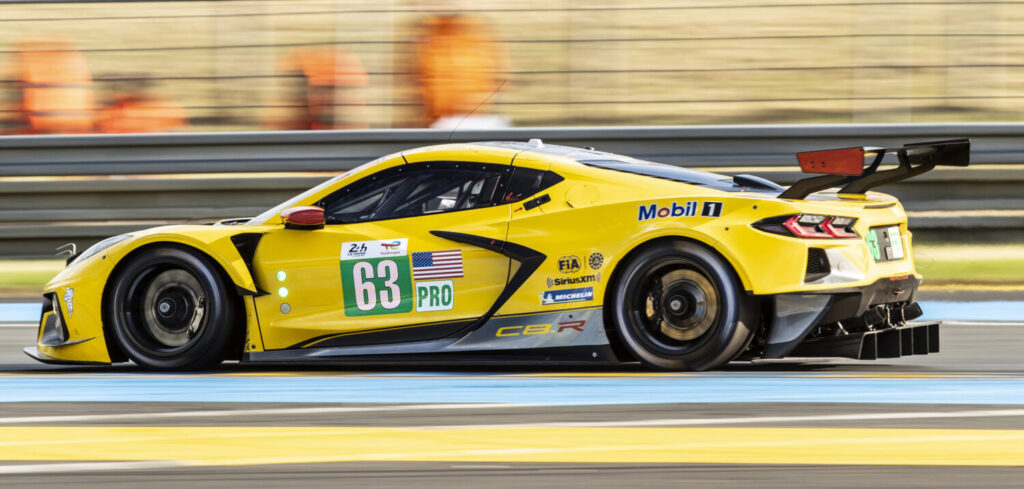The world of top-level GT racing is about to undergo a major shakeup, with GT3 spec machines set to replace GTE from 2024. PMW caught up with Corvette Racing’s program manager at the 2022 Le Mans 24 Hours to discuss the current state of play and his views on the future of GTs.
How have you seen the performance balancing process (BoP) evolve over the past years, looking at it from a competitor’s perspective?
It’s certainly a job that’s challenging for the FIA and ACO, and it is not one that I would want to have to do. I think they’ve made a tremendous improvement in the process. It’s very data driven now.
With that being said, they have to have the correct data to make decisions off of, so it’s up to us to provide them that. Now we have torque meters on the cars with instrumented axles; gone are the days of trying to manage your power, it is clear how you are running [the engine]. The cars are tested in a wind tunnel, so it is also very clear what drag you’re running. That means that what it really comes down to is evolution of tire performance [during a race], what a car might be able to do in terms of single lap pace is maybe not what it can do over a full stint.
That’s something that the FIA don’t really have information on until race time. So there’s always going to be some unknowns. However, looking at yesterday [June 8, the first qualifying session at Le Mans], there are three manufacturers are covered by a couple tenths of a second. So, yeah, I think the FIA do a very good job.
Are there areas that could be improved?
There are always ways to improve [the BoP] but really, the only way to really improve would be to have consistent categories, consistent components and consistent tires year over year. Anytime things are changing, like fuel or tires, year to year, it’s always going to be a question of who out develops everyone else.
What about the almost unmeasurable elements of performance, such as how one setup will perform better over a stint than another? Or factors such as ease of use for a driver, which contribute over an endurance race distance?
You can have the same car that’s well balanced or that understeers or oversteers [due to setup] and those will have two different tire degradation trends; a car that is well balanced will generally stay well balanced. One that has slight understeer, through tire degradation, will go toward more understeer. So the key really is to have the car balanced and that is a driving factor [in our setup decisions].
The other BoP-related factor is mass. Obviously, as mass goes up [if added due to the BoP process], you’re going to see your [tire] degradation go up as well and that is something that the BoP process handles. But in terms of making the right tire compound selection for the correct track temperatures, and having a well-balanced car, that’s down to us that’s, that’s our job.
How do you see GT racing evolving with the replacement of GTE by GT3, and can you see a move to hybridization near term?
The GT3 class is strong for 2024. A lot of cars are being introduced. BMW is already producing one, Ferrari is releasing one next year, Mercedes plans on one, Corvette plans one and Lexus is planning one. It’s going to be a strong class, lots of competition.
I think obviously, hybridization and electrification are in the path forwards. That’s something which is very interesting with the EGT series [FIA Electric GT]. It is something that GM is involved in the working groups on and keeping their finger on the pulse of. There’s no immediate direct plans to do it [and electric GT]. That being said, GT3 cars are the basis of EGT. So once we have a GT3 it gives you the ability to go down that path.



